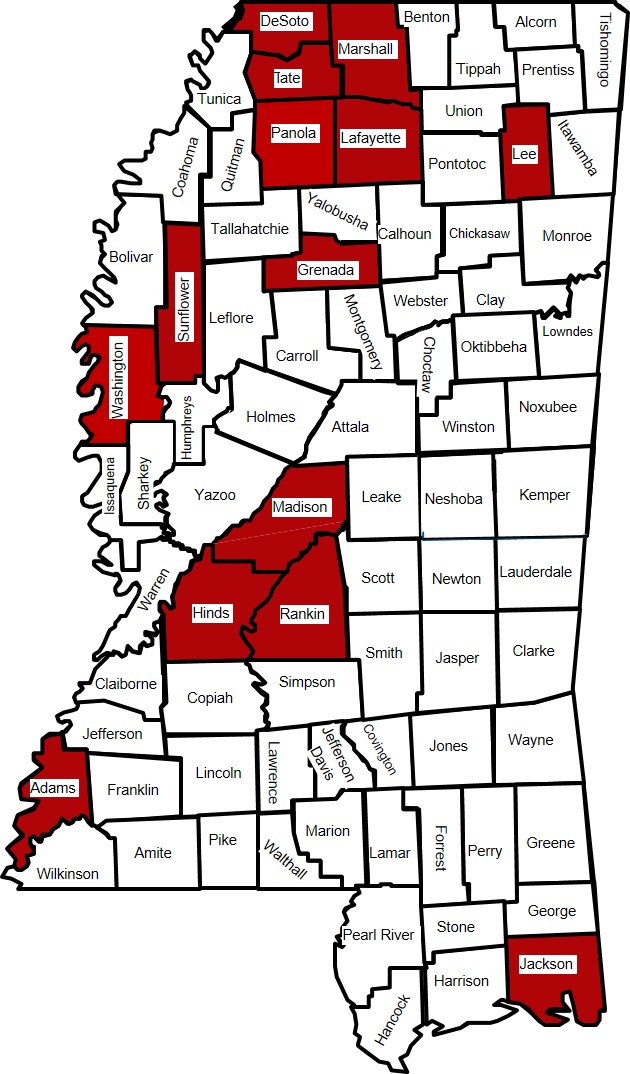Crape Myrtle Bark Scale Vol. 5, No. 6

Crape Myrtle Bark Scale
Acanthococcus lagerstroemiae
Order: Hemiptera
Family: Eriococcidae
The plague is spreading! Crape myrtle bark scale (CMBS) continues to expand its range in the state and is now present in at least 14 counties (DeSoto, Tate, Marshall, Panola, Lafayette, Lee, Washington, Sunflower, Grenada, Lee, Madison, Hinds, Rankin, Adams, and Jackson ). No doubt it will be discovered in even more places this year, spreading disappointment and vexation wherever it goes. Please be alert for this new pest and let us know if you find it in an area where it has not already been reported. Even though it is too late to stop CMBS from getting established in the state, awareness and early detection information can still help slow spread, reduce damage and improve control in individual landscapes, neighborhoods, and municipalities.
Crape myrtles are one of the most popular landscape plants in the South, fitting a landscaping use niche that can be filled by relatively few other species. Traditionally, crape myrtles have been free of serious disease and insect pests, but that situation changes drastically with the arrival of CMBS. Because this scale has few natural enemies here, they quickly develop huge populations, producing large amounts of honeydew and sooty mold and causing infested trees to be unsightly and to grow and bloom poorly. These insects don’t just make crape myrtles look bad; they also affect shrubs and other plants growing nearby, resulting in heavy accumulations of black sooty mold on these plants as well. Check out the pictures and information in the publication referenced below so you will be able to recognize CMBS if it shows up in your landscape. This is an easy pest to recognize.
Control: The best way to control CMBS is to avoid bringing infested plants into an area or landscape in the first place. Work closely with your nursery or landscape contractor to be sure any crape myrtles you purchase are CMBS free.
For trees that are already infested, systemic insecticides such as imidacloprid, dinotefuran, or thiamethoxam applied as soil injections or soil drenches are the best treatments available. Late March through May is the best time to treat, but treatments can be applied anytime an infestation is detected and trees are still actively growing. Because these treatments do not give 100% control, plan on treating trees again the following year—even if you don’t see any scale.
See extension publication 2938, Crape Myrtle Bark Scale Identification and Control, for more information. This publication contains tables with recommended insecticides for both home and commercial application, including brand names, treatment rates and tips on how to use these soil-applied products.
Blake Layton, Extension Entomology Specialist, Mississippi State University Extension Service.
The information given here is for educational purposes only. Always read and follow current label directions. Specific commercial products are mentioned as examples only and reference to specific products or trade names is made with the understanding that no discrimination is intended to other products that may also be suitable and appropriately labeled.

